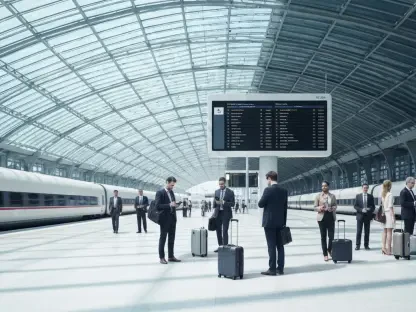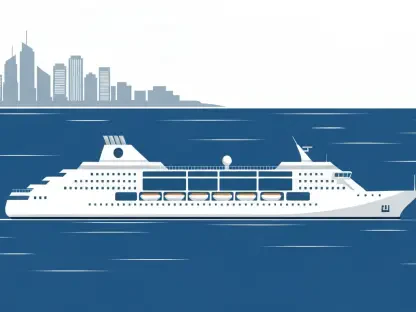Imagine a bustling hotel during peak season, with bookings pouring in from multiple online travel agencies, direct websites, and global distribution systems, while the revenue team scrambles to fix overbookings and rate mismatches. This chaotic scenario is all too common in the hospitality industry, where managing a complex web of distribution channels can easily spiral into operational nightmares. Channel mapping, the process of aligning room types, rates, and availability across various platforms, emerges as a critical solution to this challenge, ensuring seamless synchronization between a hotel’s internal systems and external sales outlets.
The intricate dance of juggling channels like OTAs, metasearch engines, and direct booking platforms often leads to errors that frustrate guests and erode profits. Without a structured approach, discrepancies in pricing or inventory can damage a hotel’s reputation and create missed opportunities. Mastering channel mapping becomes not just a technical necessity but a strategic imperative for optimizing revenue and streamlining operations in a competitive market.
This guide delves into the essentials of channel mapping, exploring its transformative benefits, offering practical steps for implementation, and highlighting tools like channel managers that simplify the process. By understanding and applying these best practices, hoteliers can turn distribution challenges into opportunities for growth and efficiency, ensuring they stay ahead in the ever-evolving hospitality landscape.
Why Channel Mapping is Essential for Hoteliers
Poor channel management can lead to a cascade of problems, from booking errors to inconsistent pricing across platforms, ultimately resulting in lost revenue and dissatisfied guests. When availability isn’t synced properly, overbookings occur, forcing hotels to offer costly compensation or relocate guests. These mishaps not only strain budgets but also tarnish a property’s credibility in a highly visible online booking ecosystem.
Channel mapping addresses these risks by ensuring consistency across all distribution platforms, fostering trust with guests who expect accurate information regardless of where they book. When rates and room availability are aligned, it minimizes confusion and enhances the booking experience, encouraging repeat business. This reliability becomes a cornerstone for maintaining a positive brand image in a market where first impressions often determine loyalty.
The benefits of effective channel mapping extend beyond risk mitigation, offering stronger distribution strategies, improved rate accuracy, and significant time savings. Hoteliers gain a clearer view of channel performance, enabling data-driven decisions that boost profitability, while automating repetitive tasks frees up staff for more strategic roles. In a complex hospitality booking landscape, streamlined distribution through mapping provides a distinct competitive edge, positioning properties to thrive amid fierce competition.
Step-by-Step Guide to Mapping Your Distribution Channels
Navigating the intricacies of distribution channel management requires a clear, actionable framework that any hotelier, regardless of property size, can adopt to streamline their operations. Channel mapping doesn’t have to be an overwhelming technical hurdle; with a structured approach, it transforms into a powerful tool for enhancing control over sales platforms. This section breaks down the process into manageable steps tailored to ensure success across diverse hospitality operations.
The following guide provides a roadmap to implement channel mapping effectively, focusing on practical actions that yield measurable results. From identifying key channels to testing setups, each phase builds toward a cohesive strategy that minimizes errors and maximizes revenue potential. Hoteliers can adapt these steps to fit their unique needs, ensuring a customized yet robust distribution system.
Step 1: Identify and Organize Your Sales Channels
Begin by compiling a comprehensive list of all distribution channels utilized, including OTAs, global distribution systems, wholesalers, and direct booking platforms. This inventory serves as the foundation for understanding the full scope of a hotel’s sales network. Clarity on each channel’s contribution to overall bookings helps in assessing their individual impact on revenue streams.
Understanding the role and performance of each channel is crucial for effective management. Some platforms may drive high volumes but offer lower margins, while others might cater to niche markets with better profitability. Prioritizing channels based on booking volume and financial returns allows for strategic focus, ensuring resources are allocated to the most impactful outlets.
Real-World Example: Channel Prioritization
Consider the case of a boutique hotel that conducted a thorough analysis of its distribution mix and discovered several underperforming OTAs draining marketing efforts with minimal returns. By redirecting resources toward enhancing its direct booking platform with targeted promotions, the property achieved higher margins and increased guest loyalty. This shift demonstrated how strategic prioritization can reshape revenue outcomes with minimal disruption.
Step 2: Standardize Room Types and Rate Plans
Reviewing and defining room types and rate plans within a property management system or central reservation system is a critical next step. Inconsistencies in naming or descriptions across platforms can lead to mapping errors, confusing both systems and guests. A uniform structure ensures that each offering is clearly represented, regardless of the booking channel.
Standardization involves aligning inventory details before connecting to external platforms, creating a seamless foundation for mapping. This preparation minimizes the risk of mismatched listings, such as a deluxe room appearing as a standard one on an OTA. Consistency in presentation enhances operational flow and sets the stage for accurate synchronization across the distribution network.
Case Study: Consistency Pays Off
A mid-sized resort faced frequent guest complaints due to mismatched room categories on various booking sites, leading to dissatisfaction upon arrival. After standardizing its room types and rate descriptions across all platforms, the resort saw a 15% uptick in bookings, attributed to reduced confusion and improved trust. This example underscores how uniformity in inventory presentation can directly boost performance.
Step 3: Link Inventory to Channels (Room Mapping)
The process of connecting each room type and rate plan to its corresponding listing on every channel, known as room mapping, forms the core of distribution alignment. This step ensures that availability, pricing, and restrictions are accurately reflected across platforms. Precision in this phase prevents common issues like double bookings or outdated rates.
Accuracy during mapping requires careful attention to detail, ensuring that restrictions such as minimum stay requirements are mirrored on each channel. Leveraging automation tools can significantly reduce manual errors, providing real-time updates that keep inventory in sync. This connection is vital for maintaining a reliable booking experience for potential guests.
Practical Example: Mapping Success
A city hotel struggling with overbookings during peak season implemented meticulous room mapping to synchronize rates and availability across all platforms. By ensuring every channel reflected the same data, the property eliminated discrepancies, resulting in a smoother booking process and enhanced guest satisfaction. This success story highlights the tangible impact of precise inventory linking.
Step 4: Test and Monitor Your Mapping Setup
After completing the mapping process, testing each connection is essential to confirm accuracy and functionality. Initial checks help identify any misalignments or glitches before they impact live bookings. This proactive approach safeguards against disruptions that could affect revenue or guest perceptions.
Regular monitoring of the setup is equally important, as changes in OTA policies or inventory updates can introduce new challenges. Scheduling routine reviews ensures that the system remains aligned with current conditions, allowing for swift adjustments. Ongoing vigilance helps maintain seamless operations and prevents costly oversights.
Example: Proactive Monitoring
In one instance, a hotel conducted a routine audit of its channel mappings and detected a pricing glitch that could have led to significant revenue loss during a high-demand period. By addressing the issue promptly, the property avoided financial setbacks and preserved its market credibility. This scenario illustrates the value of consistent oversight in sustaining distribution integrity.
The Role of a Channel Manager in Simplifying Distribution
A channel manager serves as a vital bridge between a hotel’s internal systems and external sales platforms, streamlining the complexities of distribution. This technology automates the synchronization of availability, rates, and restrictions, eliminating the need for manual updates on each channel. Such automation is indispensable for maintaining accuracy in a fast-paced booking environment.
Key features of a channel manager include real-time updates, rate parity enforcement, and overbooking prevention, all of which enhance operational reliability. These tools ensure that pricing remains consistent across platforms, reducing the risk of guest dissatisfaction due to discrepancies. Beyond basic mapping, they provide a centralized hub for managing multiple channels with ease.
Solutions like Lighthouse’s Channel Manager elevate this functionality by integrating pricing intelligence and competitor benchmarking. This added layer of insight enables hoteliers to make informed decisions on distribution strategies, optimizing performance with data-driven precision. By saving time and boosting efficiency, channel managers empower properties to focus on growth rather than administrative burdens.
Conclusion: Take Control of Your Distribution Strategy
Reflecting on the journey through channel mapping, it becomes evident that this practice transforms the way hoteliers approach revenue and operations, turning potential chaos into structured success. The steps taken to identify channels, standardize inventory, link systems, and monitor setups prove instrumental in achieving consistency and control across platforms.
Looking ahead, hoteliers are encouraged to evaluate their current distribution challenges and assess team capacity to adopt these best practices. Investing in tools like channel managers emerges as a game-changer for independent hotels, boutique properties, and resorts that aim to maintain a competitive edge in a dynamic market.
As the hospitality landscape continues to evolve, the commitment to ongoing monitoring and strategy refinement stands out as a critical factor for sustained growth. Adapting to market shifts with agility and leveraging automation paves the way for maximizing results, ensuring that properties not only survive but thrive amidst changing guest expectations and industry trends.









